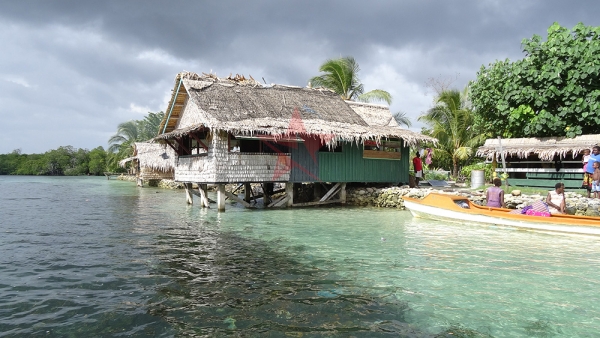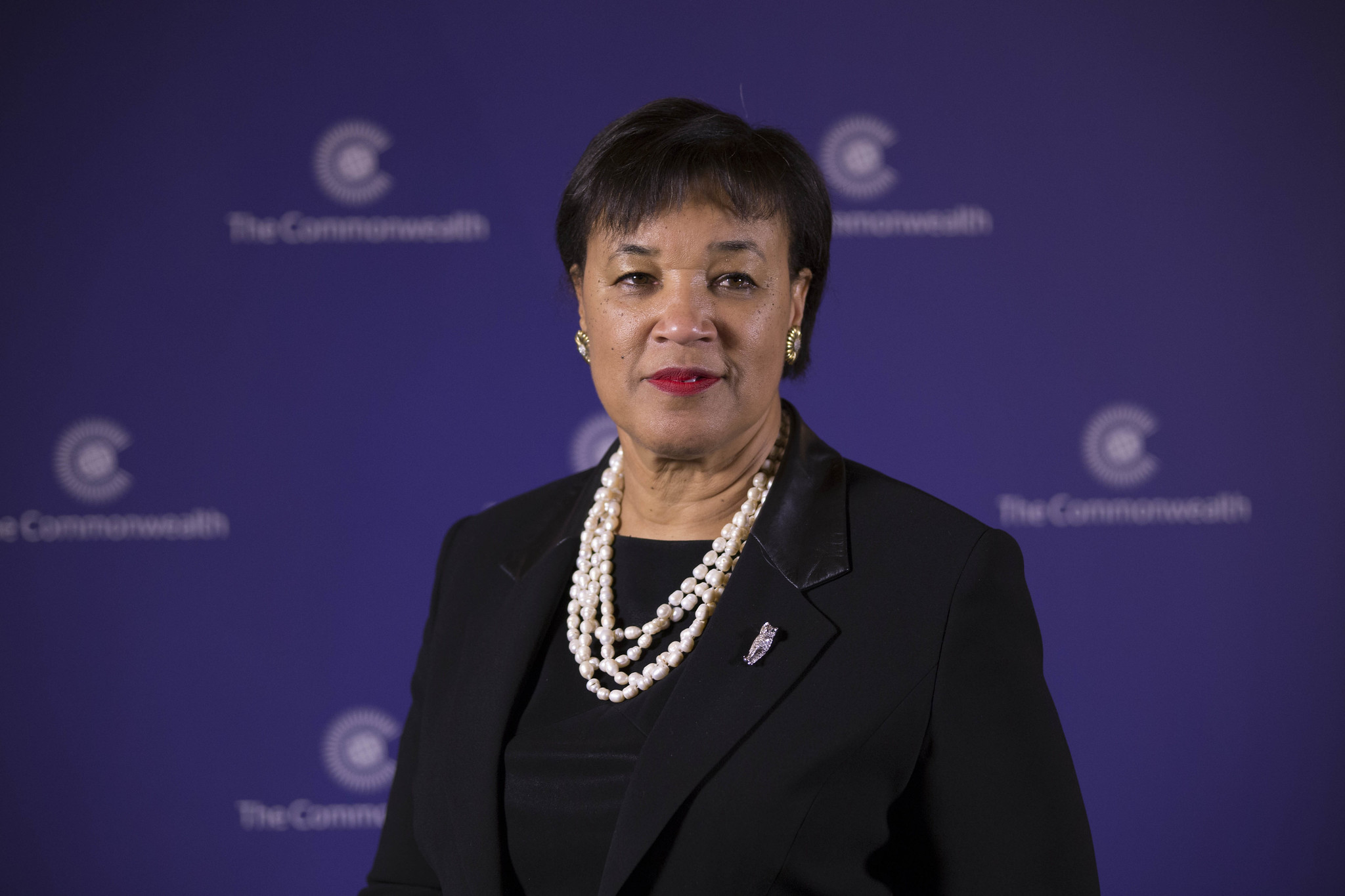LEADERS of Solomon Islands, a tiny country in the pacific now realise the importance of preparedness to comprehend the impact of climate change and the changing weather pattern.
In recent years, climate change has brought in new challenges for the local government and other stakeholders to mitigate.
Preparedness was weak and slow though both local and international organisation warned the incoming threats of climate change that might put lives, properties and also services at stake.
Honiara, the capital city of Solomon Islands has obviously experienced high precipitation leading to relentlessly drenching rains, floods and storms as a result of more extreme monsoons and changing weather patterns caused by climate change.
Urban Flash Flooding has been a new disaster ever known since the birth of Honiara some 39 years ago.
Flooding ripping through the city main road has becoming a frequent encounter causing major blow to education and health service as well as business activities.
The worst flooding ever experienced in Honiara was in early April 2014 when heavy rain brought by Tropical Cyclone Ita triggered a worst flash flooding in the history of the Solomon Islands especially Honiara.
The rains caused river systems to overflow, sending torrents of brown water through the capital Honiara and villages across Guadalcanal Province.
Homes and infrastructure were washed away, including one of the only two bridges linking the east and west of Honiara.
People most of whom were women and children were carried out to the sea with at least 22 people killed and over 50,000 affected – an estimate of almost 10 per cent of the country’s total population.
Honiara and the rest of Guadalcanal were declared disaster zone on 4 April 2014 after the devastating flood.
Now the trend of heavy rain together with flash flooding has frequently threatening the tiny city.
Heavy rain cause by monsoon early this year saw Burn Creek community, Koa hill community and White River Community sinking underwater as Solomon Islands enters the wet season which normally falls from November to April every year.
Hundreds of people were displaced with food gardens destroyed. Traffic was also disabled, schools closed down and the only Referral Hospital was also filled with water.
“Floods in recent years were not just the worst I have seen in my 14 years with the National Disaster Management Office, but in my whole life,” said Loti Yates, director of the NDMO.
Fifty years old, Robertson Galokale who lives at Burns Creek – a community situated on the outskirt of Honiara said 15 homes have been destroyed as a result of the flooding at Burns Creek Community.
“This is new, I never experienced such damage cause by flooding since I settled here twenty years ago.
“I’m investigating this new threat and I came across two contributing factors; one is the changing weather pattern and the other issue is activities caused by human in the name of development.
“Developments downstream have blocked the Burns Creek stream outlet and that when raining, pools of water filled the area,” Mr Galokale said.
He blamed unplanned developments surrounding Burns Creek downstream for causing the issue that put people’s lives at risk.
Mr Galokale said Burns Creek community is now facing new challenges more especially urban flooding as the result of extreme rainfall caused by climate change.
Former Councillor of Honiara City Mr Charles Lesimaoma who lives at White River Community in the Western end of Honiara City for over 59 years also shares similar sentiment.
He said urban flooding has been a frequent threat to his community.
“I remember well when I first settle here at White River that the River was clean and beautiful. Now the environment is 100% different as development creeped in.
“Lots of permanent houses were erected along the river and this development blocked the river that when flooding, the river runs through my community,” Mr Lesimaoma said.
He adds that in the late 1990s flooding was not a threat to his community but now people normally evacuate when small drop of rain falls in fear of flash flooding.
“Our schools, clinic and even Police station are normally sinking under water when there is torrential rain and flooding,” Mr Lesimaoma said.
He blamed unplanned development and poor drainage system as the major factors that attributes to the increasing threat of urban flooding in his community.
Minister of Environment, climate change, disaster management and Meteorology of Solomon Islands, Honourable Samuel Manetoali said the error of unplanned city, with weak building codes and diverse illegal settlement has placed Honiara in a vulnerable position to urban flooding.
He said poor drainage system as well as unplanned urban development are also other risk factors that contributes to these brutal changes.
Minister Manetoali adds that another great concern is the increase of illegal settlement on flood prone areas though the government through responsible authorities warning notices.
“After the April 2014 flooding Honiara City Council endorsed a bylaw discouraging illegal settlers to occupy flood prone areas, however enforcement of the bylaw was not effective and now settler return and reoccupy the areas that were badly damaged by the 2014 flash flooding, this is pure neglect of the law,” he said.
Minister Manetoali said attitude problem is one among other factors that contributes to high death rate during disaster in Solomon Islands.
“This is one of our problem, illegal settler willingly ignore advises we gave out and when disaster strikes they are ones badly affected and then seek the government for assistance,” he said.
Minister Manetoali said flooding has been the most economic, social and humanitarian damage than any other natural disaster that has affected thousands of people over the past 10 years in Solomon Islands.
He said existing legislations and ordinance in Solomon Islands are weak and that there are limited action the government can to address the incoming threats.
“There are lots of issues remain unsolved, but the biggest issue at the moment is that the government is incapable to provide funds and programmes to contain the increasing threat of flooding cause by the changing weather pattern in Solomon Islands.
“We continue to spend huge money to disaster relief programme every year and this indicate that we must do something in preparation for the worst in the future,” Minister Manetoali said.
He stressed that the government has great emphasis on the impact of climate change but has insufficient funds to carry out mitigation and adaptation programmes.
“We are looking for funding from our donor partners to help us address this issue because we do not have sufficient fund.
“Over the past century, Solomon Islands has become an increasingly urban society and changes in land use associated with urban development affect flooding in many ways,” Minister Manetoali said.
He said roads and buildings constructed in flood-prone areas are exposed to increased flood hazards, including inundation and erosion as new development continues.
Minister Manetoali adds that land use and other human activities also influence the peak discharge of floods by modifying how rainfall are stored on and run off the land surface into streams.
He said removing soil, grading the land surface, and constructing drainage networks increase runoff to streams from rainfall as a result peak discharge, volume, and frequency of floods increase in nearby streams changes to stream channels with limit their capacity to convey floodwaters.
According to the Ministry of Environment, climate Change, Disaster Management and Meteorology Services, rain table have been changed dramatically.
Solomon Islands Meteorology Department reports that year-to-year rainfall variability over the Solomon Islands is generally larger than the projected change with the largest projected change in rainfall later in the century.
Former Director of Solomon Islands Metrological Mr David Hariasia said Solomon Islands history of extreme rainfall and flooding has brutal effect to lives and properties.
He said flooding cause by extreme rainfall which normally occurred between Novembers to April every year have claimed lives and also rise physical, social, economic and political implications.
“Honiara’s vulnerability to urban flooding is 90 percent and this is due to the changing rainfall table.
“Our record shows that the current rainfall table has changed very much compared to the past years.
“We show the trend of frequent rainfall is hanging over Solomon Islands,” Mr Hariasia said.
It is clear that impact of urban flooding has cause loss of lives and property, loss of livelihoods, decreased purchasing and production power, psychosocial effects, hindering economic growth and development as well as Political implications.
The government along with other stakeholders have come together with plans in effort to address the issue.




